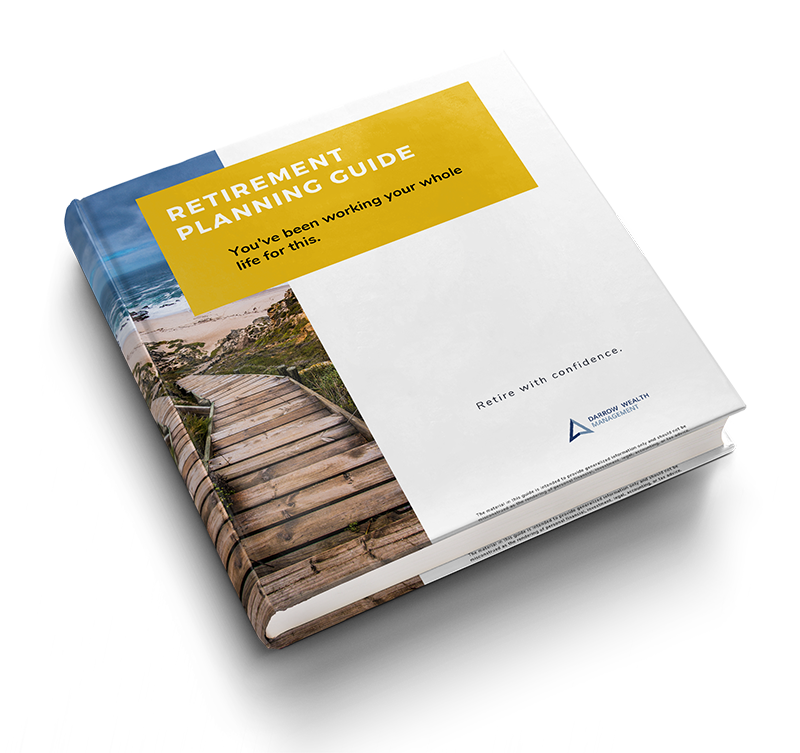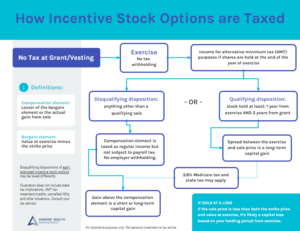Updated for 2021. One of the most common ways Americans save for retirement is through a 401(k) plan offered at work. As 401(k) plan assets typically represent a considerable amount of an individuals’ retirement savings, adequate funding and proper management are key components to a successful strategy.
401(k) plan basics
The rise in popularity of 401(k) plans coincided with the decline of pension plans, effectively shifting the retirement savings burden from companies to their employees. While the traditional defined benefit pension plan is funded exclusively by employer contributions, 401(k) retirement plans, also called defined contribution plans, are mostly funded by the employee-participants. Although your employer may not be required to make contributions to your account, 401(k) plans are structured as profit-sharing plans. The most common form of profit-sharing is when an employer makes discretionary matching contributions to a participant’s account.
Investment options in 401(k) plans are generally limited to a defined “menu” of available funds. Although low-cost exchange traded funds (ETFs) have become more popular in 401(k) plan investment lineups, many plans may still limit their offering to actively managed mutual funds.
Traditional 401(k)
In the traditional 401(k) plan, employees elect to defer a percentage of their income on a pre-tax basis. Those contributions then grow tax-deferred until retirement.
In 2021, employee-participants under age 50 may defer up to $19,500 per year. Employees over age 50 may defer an additional $6,500, called a catch-up contribution. The maximum combined annual total contribution for both employees and employers in 2020 is $58,000, which excludes the catch-up contribution.
Roth 401(k)
The Roth 401(k) is very much like a traditional 401(k) except instead of making before-tax contributions, employees fund a designated Roth account within their 401(k) with after-tax dollars. Employees may choose to contribute to either or both types of 401(k) plan; however the annual contribution limits above will apply to aggregate additions made across both accounts. Unlike a Roth IRA, which has income limitations excluding high earners from participating, there are no such restrictions on a Roth 401(k).
Even when an employer chooses to offer a Roth option within their 401(k) plan, the employer’s contributions (if any) will still be applied to the pre-tax account.
How much to contribute to a 401(k)
The best way to build wealth over the long term is through a commitment to saving and investing. Starting to contribute to a 401(k) plan early on in life can really make the biggest difference. Over time, funds invested in a traditional 401(k) will grow tax-deferred, and investors will significantly benefit from compounding, which is when you generate investment earnings from your previous investment earnings. The result for the early-saver is often a larger account balance – with fewer dollars contributed – compared to their late-start counterparts.
High earners
If you are financially able to max out your annual 401(k) contributions, you should. Generally, it is best to spread your contributions out evenly throughout the year due to the benefits of dollar cost averaging. Since the market goes up and down each day and is impossible to try and predict, dollar cost averaging helps to smooth out the volatility in what a fixed dollar amount can buy. Some weeks you will be able to buy more shares for your dollar contribution than others, as the market fluctuates.
Depending on how your company’s 401(k) is set up, you may also be leaving money on the table by front-loading your 401(k). If your employer offers a match which is capped at, for example, 5% of your salary per pay period, and you’re contributing 30% of your pay to fully fund your 401(k) by March, you’re probably going to leave money on the table unless your employer does a true-up at the end of the year.
Related: 401(k) Match Mistakes
Keep in mind, even if you max out annual contributions, it may still not be enough to provide the lifestyle you want in retirement. Consider investing outside of your retirement plan with a brokerage account.
Wealth builders
If you’re not yet able to max out your 401(k) each year, try to start with at least 8% of your salary and increase your deferral by 1-2% each year. It may seem like a lot of money initially, but it doesn’t end up being a dollar-for-dollar hit to your net pay since the contributions are made before tax. Also, keep in mind that since the contributions will be made throughout the year, the net impact on each paycheck will probably be minimal.
If your company offers matching contributions, you should strive to take full advantage of the match. Matching contributions are essentially free money. However, keep in mind that there are often vesting requirements for matching funds in 401(k) plans. If you don’t stay at the firm long enough, you may forfeit the employer-added dollars. All of the funds you contribute are always 100% vested.
Selecting the asset allocation for your 401(k)
Your 401(k) retirement plan will include a pre-selected list of investments for you to choose from, called the fund lineup. The options generally include target date mutual funds, mutual funds for a specific asset class, and perhaps some ETFs as well.
Investors just starting out may want to consider using a target date fund to begin with. Target date mutual funds are set to your retirement date and include a mix of stocks and bonds. You don’t need to rebalance target date funds and the asset allocation will automatically become more conservative as you move closer to retirement. One of the downsides of target date funds is that they are expensive – the expense ratio is usually around 1% which eats directly into your returns.
Once you have grown your 401(k) a bit more it may be advantageous to do some fund research and select an asset allocation based on your options. You will want to consider a number of elements, such as a fund’s rating, asset class, objective, historical track record, expense ratio, and suitability for your investment objective. The goal is to balance risk with reward while considering costs. The importance of being well diversified cannot be over-stated.
Figuring out the appropriate asset mix for your age and risk tolerance is the most challenging part of enrolling in a 401(k) for many investors. Since the majority of your retirement assets may be saved in a 401(k) plan, it may make sense to consider working with a fee-only financial advisor to develop a unified financial strategy.
Holding company stock in your retirement plan
There are two ways you may be holding your employer’s stock in your retirement plan: you select it as an investment option or your company’s match is in shares of their stock. According to Bloomberg’s ranking of retirement plans, in 2014, one in five of the largest companies in the S&P 500 made 401(k) contributions in company stock. In these situations, check the retirement plan documents to learn how and when you can liquidate the shares to diversify your portfolio.
When you buy single stocks instead of an index or fund of stocks, your portfolio may lack diversification. The inherent risks in owning individual equities are magnified when that company is also your employer. You already rely on the company to pay your salary and cover other job-related benefits like health insurance, so over-concentrating in company stock becomes an elevated risk. Exactly how much money you should have in company stock will vary on the individual, but in general, not more than 10% of your net worth.
How to manage your 401(k)
Once your retirement plan is set up, you will need to check the account every six months or so as your investment options may have changed or your original asset allocation may have shifted from your target. When this happens, you will need to rebalance your 401(k) plan. When you rebalance, you sell a portion of the funds which have grown faster than other asset classes in your portfolio, and use the proceeds to buy more of the funds that are being underrepresented.
So at a very high level, if your initial asset allocation was 80% stocks and 20% bonds, in six months your account may have drifted to be 90% stocks and only 10% bonds, which exposes you to much more market risk. To rebalance, you would sell a portion of your equity shares and buy more bonds, so the asset allocation reverts to the target 80/20 mix. Managing your own investments does take time, so be sure to weigh the benefits of doing it yourself versus working with an advisor.
Is saving in a 401(k) all you need to do for retirement?
For some individuals, a 401(k) may be enough to fund retirement. However, for many investors, particularly those who got a late start saving for retirement, annual contributions to a workplace retirement plan won’t be enough to fund their desired retirement lifestyle.
If you began maxing contributions to your 401(k) plan early in your career and your desired retirement lifestyle requires only moderate spending, then perhaps your 401(k) will be enough. Other factors that may indicate your 401(k) plan savings are sufficient: your employer contributes a significant amount to your account each year, you have outside sources of income in retirement (e.g. a trust, rental income), or you have other benefits like a pension.
For many investors, savings in a 401(k) plan alone may not fund their desired retirement. Perhaps you wish to retire early or did not begin maxing out your 401(k) until later in life. How much you need saved up to retire is really determined by your spending habits. The math is simple: if you only need $30,000 to live on each year, you will get a lot more mileage out of your retirement assets than if you need double or triple that amount annually.
One of the best ways to boost retirement savings after you’ve maxed out your 401(k) is through a brokerage account. There are no annual caps on contributions to a brokerage account and you may decide to sell your positions and use the funds at any time, for any reason, without penalty. Unlike a tax-deferred 401(k) plan, you will pay taxes on dividends and capital gains each year with a brokerage account. Using a brokerage account is one of the best ways savers can build wealth and achieve financial independence.
Can you make contributions to multiple retirement plans?
Yes, it is possible to contribute to more than one employer-sponsored retirement plan. This is especially common for employees with a full time job who also run a business on the side. The annual elective deferral limits apply to the individual, not the plan. So if you’re covered by a 401(k), 403(b), SIMPLE 401(k), or SIMPLE IRA, your individual contributions will be aggregated and cannot exceed the lesser of deferral limits set by the plan, 100% of your eligible compensation under the plan, or the maximum contribution limit as set annually by the IRS.
Profit sharing contributions made by an employer are generally allowed, as long as you are participating in the retirement plans of unrelated employers. More on participating in more than one workplace retirement plan here.
What to do with your 401(k) when you change jobs
When you leave your job, you generally have four options for your old 401(k) plan:
- Roll the 401(k) plan over to a traditional IRA
- Convert the 401(k) to a Roth IRA
- Roll the funds over into your new employer’s 401(k) plan
- Leave the plan where it is, at your old employer
401(k) to IRA rollover
The most popular option is to roll an old 401(k) into an IRA. With an IRA rollover, there are no tax consequences to you and you’re able to expand your investment options as you’re no longer limited to the fund lineup. An IRA rollover also allows you to consolidate your accounts at one financial institution and take advantage of a holistic wealth management strategy from your advisor.
Roth conversion
As discussed earlier, high earners are excluded from contributing to a Roth IRA. However, anyone is allowed to make one Roth conversion per year, regardless of how much they earn. When you convert a 401(k) to a Roth IRA, you will need to pay income tax on the value of the account the year you convert. However, afterwards, the investments will grow tax-free.
There are a number of features of a Roth IRA which are unique and valuable; however you will need to weigh the benefits with the costs. Generally, it does not make sense to convert to a Roth if you plan to pay the taxes out of your retirement account. Also, if you do not have an ongoing Roth strategy and the account is only a small piece of your overall financial picture, it may not provide a meaningful benefit. To learn more about Roth conversion considerations, click here.
Roll the funds from your old 401(k) into your new 401(k)
The benefit of rolling the funds from your old plan into your new plan is generally that you’re able to keep more of your retirement assets consolidated at one custodian. If your new 401(k) permits rollovers into the plan, you’ll first want to evaluate the expenses and investment options within the plan. Again, each 401(k) plan will have its own fund lineup, and some are much more limited than others.
Keep multiple 401(k)s or consolidate?
The last option is to keep your old 401(k) with your old employer. If your account is small, perhaps $5,000 or less, your old company may not permit this. Keeping your old 401(k) with your old employer is typically only advisable in two situations: you want to retire and wish to use funds from your 401(k) before age 59 1/2, since 401(k) plans permit you to take withdrawals at age 55 without the 10% early withdrawal penalty that applies to IRAs; or your new employer does not offer a qualified retirement plan like a 401(k) and you need the creditor protection provided by a 401(k). Assets in “ERISA-Qualified” retirement plans (like 401(k) and 403(b) plans) are excluded from an individual’s bankruptcy estate without limitation.
As a result of the Bankruptcy Abuse Prevention and Consumer Protection Act of 2005 (BAPCPA), both traditional IRAs and Roth IRAs were given creditor protection in an aggregate value of $1 million, adjusted every three years for inflation. The last increase in 2016 was to $1,283,025. Learn more about asset protection strategies for 401(k) rollovers here.
If growing and protecting your retirement savings is a priority for you, consider the benefits of working with a trusted advisor. To learn more about Darrow Wealth Management and what we can do for you and your family, contact us today.











